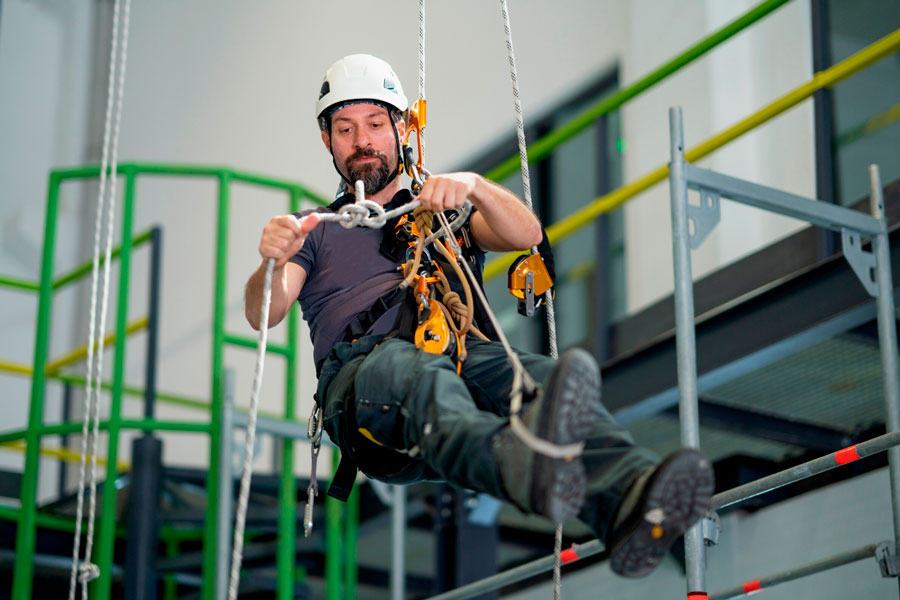Vertical works are safe and efficient work methods that use ropes, harnesses, and other support systems to access and position workers in hard-to-reach spaces at height. These works offer multiple advantages such as speed of execution, safety in task performance, and minimal environmental impact.
However, adequate training and certification are required to engage in vertical works. This is where IRATA (Industrial Rope Access Trade Association), the main authority in the vertical works sector, comes into play. Its worldwide recognized accreditations are offered in three levels of training, enabling technicians to be trained in the use of equipment, legislation, and high-level rescues.
In this article, we will analyze what vertical work and IRATA are, and why obtaining an IRATA accreditation is important.
What are Vertical Works?
Vertical works are those performed at height using ropes and other support systems. These works are applied in various sectors such as energy, construction, environmental conservation, and renewable energy.
Some of the advantages of vertical works are:
- Speed: The assembly and disassembly time of equipment is reduced, and interruptions to traffic or normal site activity are avoided.
- Safety: The risk of falls is minimized, and strict occupational risk prevention rules are followed.
- Environmental impact: The use of scaffolding or elevating platforms that may damage the environment or generate waste is avoided.
What is IRATA?
IRATA (Industrial Rope Access Trade Association) is the international organization that establishes safety and quality standards for the vertical works sector. Founded in 1988 by a group of British companies, IRATA has more than 400 members worldwide and represents over 100,000 certified technicians.
IRATA offers three levels of training and certification for rope access technicians:
- Level 1: To start in vertical works. Applicants must be over 18 years old and have adequate physical fitness. Basic techniques for climbing, descending, rope changing, obstacle passing, and rescue are learned.
- Level 2: To perfect the skills acquired in Level 1. Applicants must have at least one year of experience and 1,000 hours registered as a Level 1 technician. Advanced positioning, anchoring, installation, and rescue techniques are learned.
- Level 3: To supervise and manage vertical works. Applicants must have at least one year of experience and 1,000 hours registered as a Level 2 technician. Leadership, planning, evaluation, and documentation techniques are learned.
Conclusion
Vertical works are a safe and efficient form of work at height, applied in various sectors and locations. Adequate training and certification are required to engage in these works, ensuring technical competence and worker safety.
IRATA is the leading organization in the vertical works sector, offering a globally recognized and demanded certification. Obtaining an IRATA accreditation is an opportunity for professionals who want to work at height with quality and confidence.
If you want to obtain your IRATA certification or expand your training in vertical works, contact us.
At Total HSE, we offer courses tailored to your needs and objectives, taught by expert instructors certified by IRATA. Don’t hesitate and sign up for our vertical works and IRATA courses. We are waiting for you.
